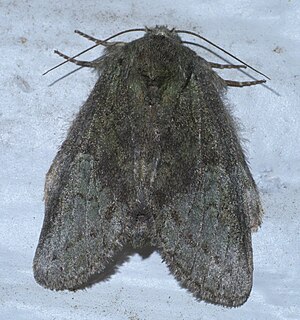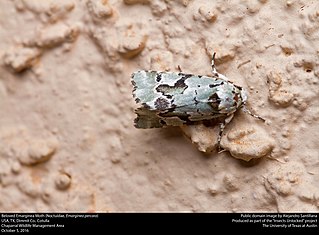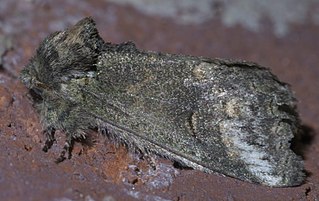| Heterocampa averna | |
|---|---|
| Scientific classification | |
| Kingdom: | |
| Phylum: | |
| Class: | |
| Order: | |
| Family: | |
| Genus: | |
| Species: | H. averna |
| Binomial name | |
| Heterocampa averna Barnes & McDunnough, 1910 | |
Heterocampa averna is a species of prominent moth in the family Notodontidae. [1] [2] It was described by William Barnes and James Halliday McDunnough in 1910 and is found in North America. [2]

Notodontidae is a family of moths with approximately 3,800 known species. Moths of this family are found in all parts of the world, but they are most concentrated in tropical areas, especially in the New World. The Thaumetopoeidae are sometimes included here as a subfamily.
William David Barnes was an American entomologist and surgeon. He was the son of Dr. William A. and Eleanor Sawyer Barnes. He graduated salutatorian from the Decatur High School in 1877. Then spent a year at Illinois State University followed by a year at University of Illinois. In 1879, he entered Harvard Medical School and graduated in 1886. While at Harvard, he met naturalist Louis Agassiz and his love of Lepidoptera grew. Agassiz taught him how to preserve and classify the butterflies. He completed an internship at Boston City Hospital and then studied abroad in Heidelberg, Munich and Vienna. In 1890, Dr. Barnes came home to Decatur and opened his medical practice. That same year he married Charlotte L. Gillette. The couple had two children: William Barnes Jr., and Joan Dean Gillett Barnes.
James Halliday McDunnough was a Canadian entomologist best known for his work with North American Lepidoptera, but who also made important contributions about North American Ephemeroptera.
Contents
The MONA or Hodges number for Heterocampa averna is 7991. [3] [4]





